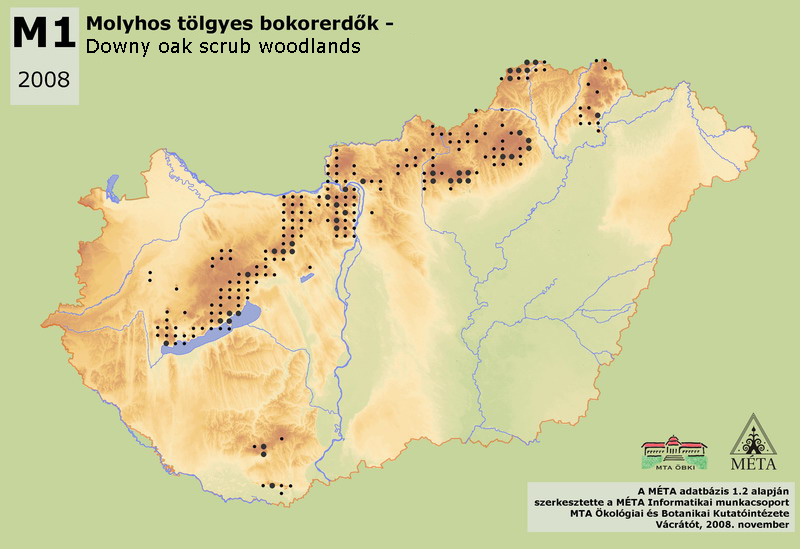MÉTA Program >>> Habitat distribution maps


M1 – Downy oak scrub woodlands:
Colline-submontane mosaic habitats of low-growing or dwarf forests and dry grasslands. Quercus pubescens is the most prevalent species of the tree layer in forest patches. The shrub layer is generally well-developed and not sharply separated from the tree layer. This habitat occurs exclusively with dry and rocky grasslands. Minimal proportion of the tree clusters in the mosaic is 33%. Its total area is around 2200 ha in the country. It is common in the Dunántúli-középhegység (800 ha, uncertain: Velencei-hegység), and can be found in most parts of the Északi-középhegység (1200 ha, missing: Cserehát, Putnoki-dombság). Also occurs in the mountains of Dél-Dunántúl (200 ha, Mecsek, Villányi-hegység), and sporadically at the eastern edges of Nyugat-Dunántúl (Ság-hegy). Connected to warm climate and to shallow, stony soil, occurring mainly on southern slopes, downy oak scrub woodlands are perfectly adapted to summer droughts. As it is a forest-grassland mosaic habitat, the estimation of the extension is uncertain, depending mainly on the decision that how much grassland is included.
Molnár, Zs., M. Biró, J. Bölöni & F. Horváth (2008): Distribution of the (semi-)natural habitats in Hungary I.: Marshes and grasslands, Acta Botanica Hungarica 50 (Suppl): 59-105. >>> letöltés (5,4 MB, PDF)
MÉTA Program,
MÉTA Fotótár
MÉTA Élőhely-Ismereti Útmutató (ÉIÚ),
MÉTA Adatlap-Kitöltési Útmutató (AL-KÚ)
(C) MÉTA Informatika, 2005-2009,
MTA Ökológiai és Botanikai Kutatóintézete